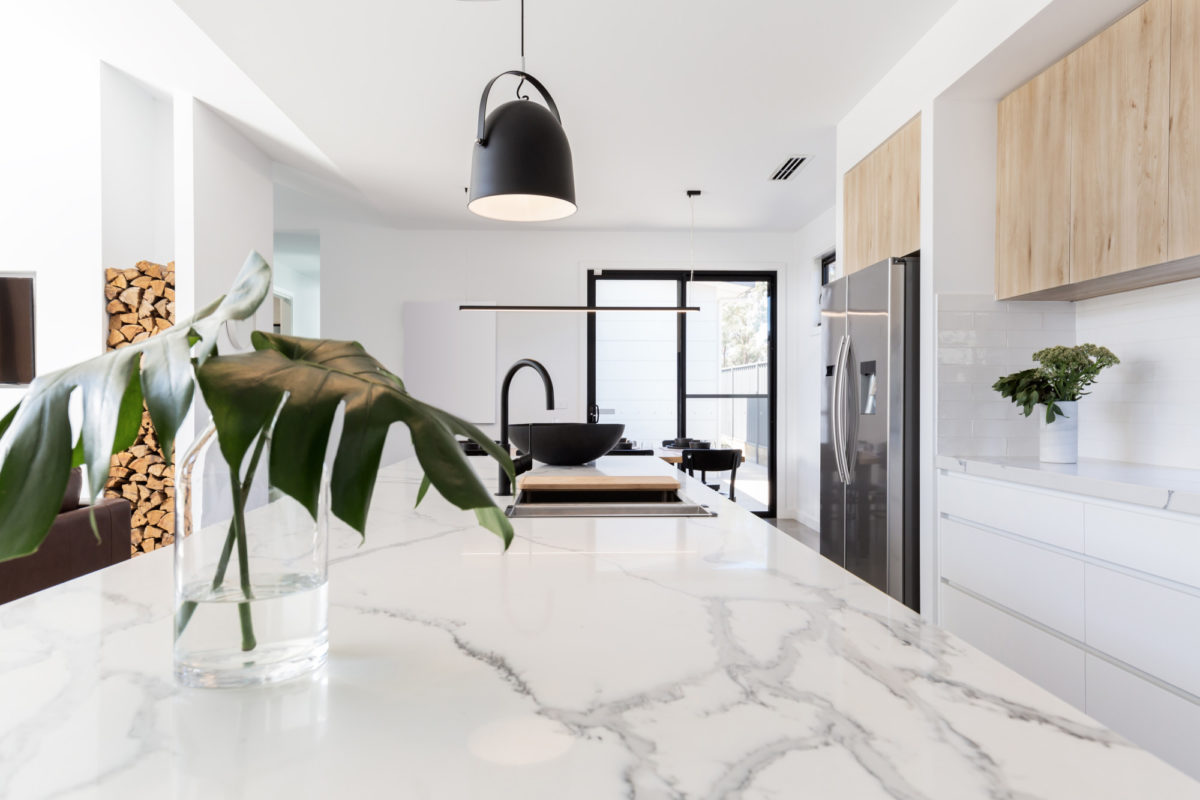A traditional choice in decor, marble’s popularity goes all the way back to ancient Greece and Rome.
Some of the most iconic monuments, temples, and sculptures from thousands of years ago are crafted from marble. The Parthenon in Athens and the Colosseum in Rome were both built using the metamorphic stone.
Marble lends a certain classic beauty wherever it’s used. It’s no surprise it’s favored in so many homes today, especially in the kitchen.
Yet despite its durability that can stand the test of time, marble is also deceptively delicate. Marble is softer and more porous than other stones and develops a patina with use. That’s why it’s prone to developing stains, cracks, and scratches.
In order to protect its natural beauty, marble countertop maintenance must be performed regularly. Read on to find out how to take care of your countertops the right way.
Marble Countertop Maintenance
Marble is a great investment on top of being a great decor choice when remodeling.
Its high durability means it’ll last for years and years and never lose value. The veining that is so quintessential to marble is caused by mineral deposits that were within limestone when the Earth super-heated and pressurized it. No two slabs of marble are alike, meaning your countertop will always be one of a kind.
In order to preserve the quality of your stone countertop, a little daily marble care is needed. This guide will explain how to care for marble counters, how to properly clean them, and how to deal with stains.
Daily Cleaning
Acidic foods and drinks can stain marble because of how porous the stone is. Wine, coffee, sodas, and citrus fruits can all stain or dull a marble’s finish. If food preparation is done on its surface, any spills must be wiped up immediately.
Direct cutting on the countertop should be avoided as marble is soft and can be scratched. Instead, consider placing down a protective plastic sheet or using a cutting board.
Do not use a generic household cleaner. Products with acids, alkalis, or other chemicals will damage the countertop’s finish or wear down the sealant. Instead, mix a mild dish soap in warm water and wipe with a cloth.
Stain Removal
Sometimes even the most strict of marble countertops care can’t prevent a stain from forming. Luckily, there are proven, efficient steps you can take to banish an ugly stain.
First, in order to combat the stain, it must be correctly identified. This is key to knowing how exactly to tackle the stain.
- Oil-Based Stains: Liquids like milk, grease, or cooking oil can darken marble. In order to lift a stain caused by one of these, you must use one of the following: soft, liquid cleanser with ammonia, bleach, acetone, or mineral spirits.
- Organic Stains: Tea, wine, coffee, fruit, and other food stains are all considered organic stains. These blemishes will often have a pinkish-brown appearance. To clean this type of stain, use a 12% hydrogen peroxide solution mixed with a couple drops of ammonia. Use a damp cloth to wipe.
- Ink Stains: If a pesky stain mars your dark-colored marble countertop, use acetone. If the marble is the more traditional light color, then you’ll need to use a 20% hydrogen peroxide solution.
- Paint Stains: Accidents happen during remodeling. Don’t let a small drip of paint on your new marble countertop feel like the end of the world. Dab at the paint stain with a lacquer thinner or use a razor blade to carefully scrape it away.
- Water Spots and Ring Stains: Water staining can be rubbed away with a dry, steel wool pad. This method can also be used to buff out scratches.
- Metal Stains: These types of stains can be more time-intensive to remove. Different types of metal will leave behind different colors. Iron or rust leaves an orange to brown stain, while copper and bronze will leave behind a greenish or brown tint. A poultice is typically needed to remove metal stains.
How to Make a Poultice For the Care of Marble Counters
Harder to remove stains caused by rust, ink, or paint sometimes requires a poultice. A poultice is a liquid or chemical cleaner mixed with either flour or baking soda to form a paste. It works by drawing the stain out into the white absorbent material. Read on for the steps to making and using a poultice.
- Step 1: Mix baking soda or flour with water until it forms a paste with the consistency of peanut butter.
- Step 2: Spread the poultice over the stain to a thickness of around ¼ to ½ inch with a wooden or plastic spatula.
- Step 3: Cover up the poultice with plastic and let it work for 24 to 48 hours to fully seep into the pores of the marble.
- Step 4: Remove the wrap and give the poultice time to dry out and finish absorbing the stain.
- Step 5: When the poultice is dry to the touch, remove it and wipe the countertop clean with a damp cloth.
Follow these five simple steps and the poultice should pull out the stain. It’s important to note that tough, set-in stains might require an additional poultice treatment.
Sealing Is Your Friend
Because marble is so porous, a sealant will go a long way in preventing many stains from forming in the first place. Think of it as a barrier between your marble countertop and the rest of the world. It’s an essential component in marble care.
It’s recommended that you re-seal your marble countertop every three to six months. If in doubt, it’s easy to tell when a reapplication is needed.
Simply drip some water onto the countertop. If it beads, the sealant is still working. If the water soaks into the marble, then it’s time to apply more sealant.
There are two types of sealant you can use: topical and penetrating.
- Topical Sealant: As denoted by its name, this sealant sits on the surface of the marble only. Topicals can alter the look of the marble but do provide protection against acidic drinks and food. However, topical sealants have a tendency to gradually wear off and can also be scorched from a hot pot or pan.
- Penetrating Sealant: The exact opposite of topical sealants, penetrating sealants seep into the pores of the marble. A penetrating sealant works by preventing liquids from absorbing into the countertop surface. This sealant is the one most commonly recommended and used.
Marble Countertops Are Timeless
Marble counters are more affordable than ever. They make any room instantly appear more sophisticated and bright. Their surface is durable and maintains a constant cool temperature, making it ideal for baking. It’s been in use for hundreds of years for a reason.
Are you considering getting new marble counters installed? Contact us today and rest easy knowing you have experts in marble countertop maintenance to make your dream kitchen a reality.

